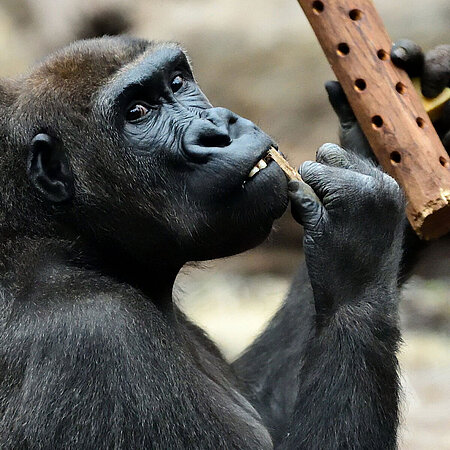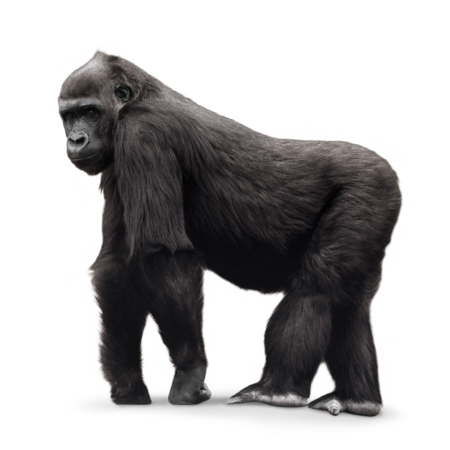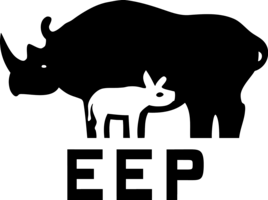Western lowland gorilla
Gorilla gorilla gorilla

- FamilyGreat apes (Hominidae)
- Weight♀ bis zu 90 kg, ♂ bis zu 180 kg
- HabitatTropical rainforests
Knuckle walking
Gorillas are the largest great apes. An adult male, also called a silverback due to the characteristic silver hair on its back, can weigh up to 180 kg. Although males can climb, their heavy build means they prefer to stay on the ground. Both sexes typically walk on all fours with their knuckles touching the ground. This is known as knuckle walking.

A life in the day of gorilla
Gorillas spend most of their time eating, consuming up to 25 kg of leaves each day. Another important part of the gorilla’s day is grooming, although this tends to be primarily self-grooming. Mutual grooming is not as common with gorillas as with other primates. In the evening, each gorilla builds its own nest of leaves and branches for a good night’s sleep.
Infants up to the age of four have a white tuft of hair on their rump to make them easily distinguishable to the adults as the little ones to protect.
Distribution


Hellabrunn Zoo participates in the European Endangered Species Programmes